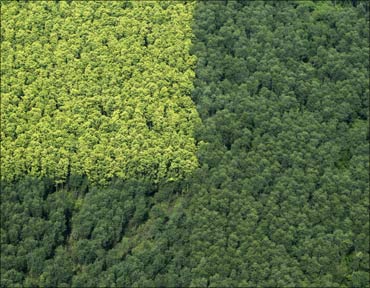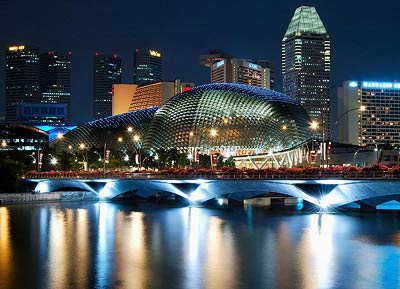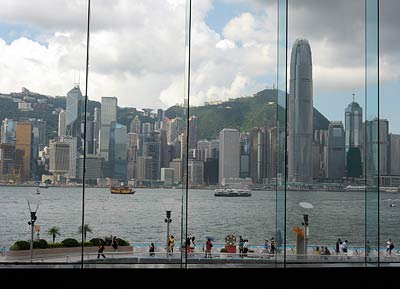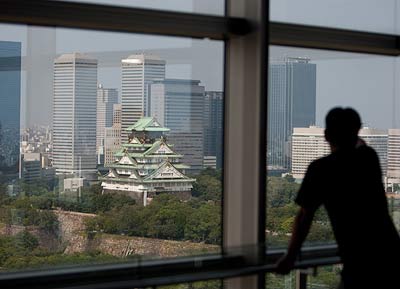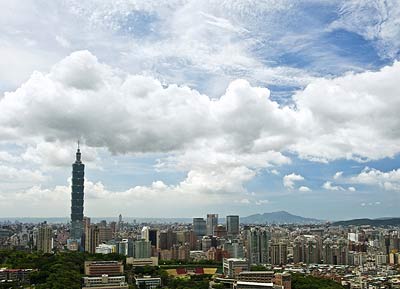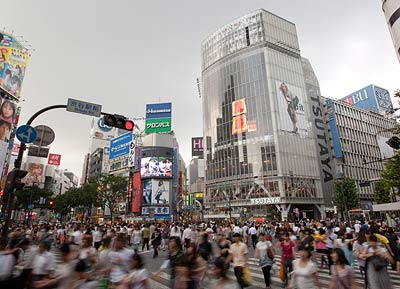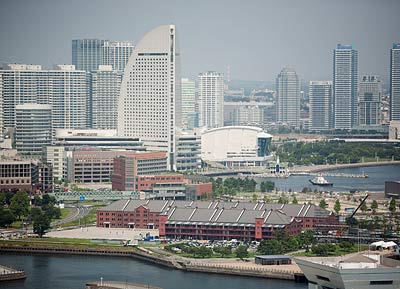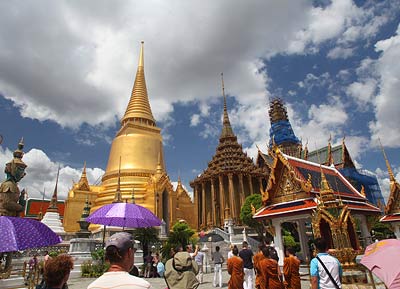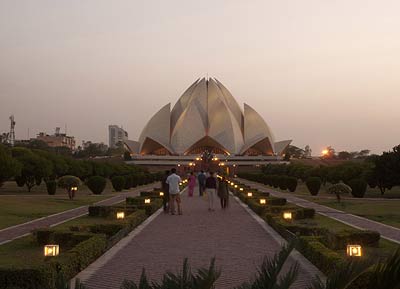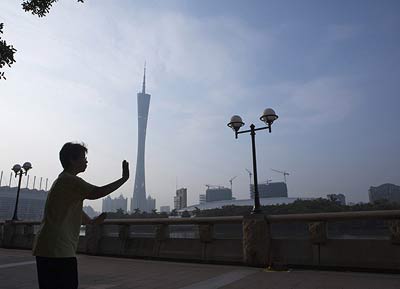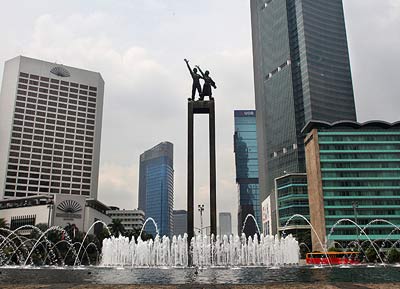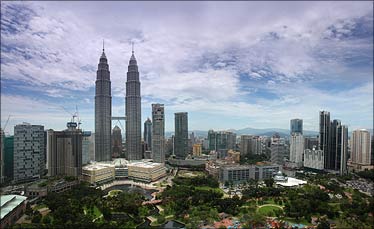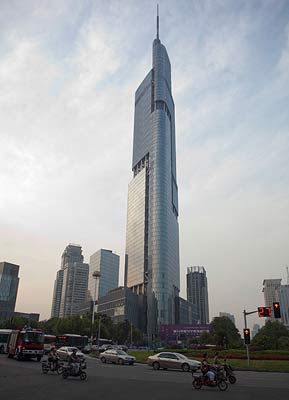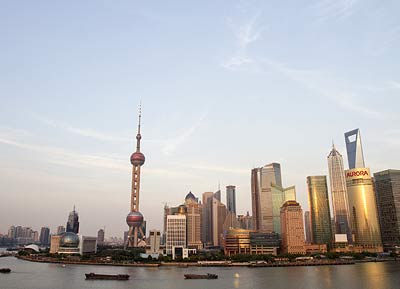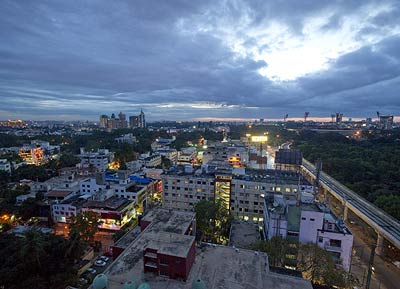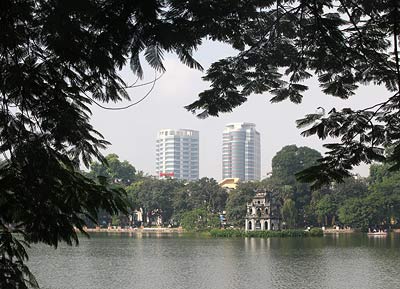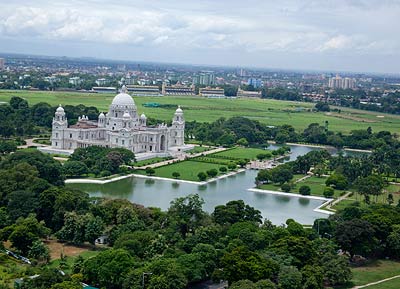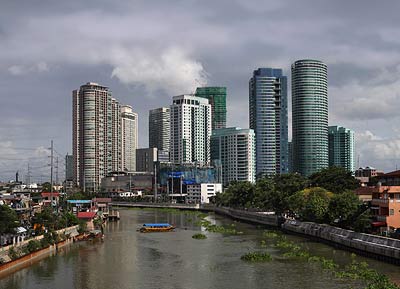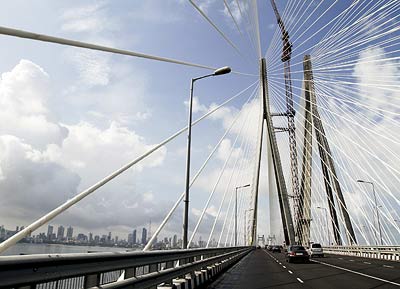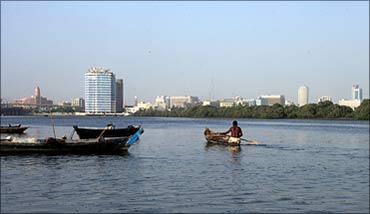 | « Back to article | Print this article |
These are Asia's 22 greenest metropolises!
The Asian Green City Index, a study commissioned by Siemens and performed by the independent Economist Intelligence Unit, analysed the aims and achievements of major Asian cities with respect to environmental and climate protection.
From India, four cities feature in the report.
The Asian Green City Index examines the environmental performance of 22 major Asian cities in eight categories: energy and CO2, land use and buildings, transport, waste, water, sanitation, air quality and environmental governance.
The EIU developed the methodology in cooperation with leading urban experts around the world, including representatives of the OECD, the World Bank and Asia's regional network of local authorities, Citynet.
"The study of Asian cities shows one thing very clearly: higher income does not necessarily mean higher resource consumption. While resource consumption increases substantially up to an annual gross domestic product of about $15,000 per capita, it drops again when income rises beyond this," said Jan Friederich, research head of the EIU study.
This is primarily because in prosperous Asian cities, environmental awareness is greater and infrastructures are more efficient. These cities are actively cutting their consumption of natural resources and are thus developing more sustainably.
The 22 Asian cities use an average of 277 litres of water per person per day, which is slightly higher than the figure for Latin America, 264 litres, but lower than the figure for Europe, at 288 litres.
Click NEXT to read on . . .
These are Asia's 22 greenest metropolises!
Also among the study's particularly gratifying results were the following:
Environmental awareness is growing, and a majority of the Asian cities have already introduced comprehensive environmental guidelines.
Average annual CO2 emissions per capita are 4.6 tonnes in the Asian cities, and below the corresponding figure for Europe (5.2 tons per capita and year).
The 22 Asian cities produce an average of 375 kg of waste per capita and year, less than in Latin America (465 kg) and Europe (511 kg).
According to the study, the biggest challenges facing Asia's cities are in the following areas:
Air pollution levels are relatively high in all the cities studied, regardless of income. The average values for all the cities substantially exceed WHO standards.
Asia's metropolises have much catching up to do in the area of renewable energies, which on average account for 11 per cent of the total electricity generated in the 22 cities. By comparison, the average in Latin America is 64 per cent due to the high proportion of hydroelectric power plants there.
Cities are the growth engines of the future, but they are also responsible for 75 per cent of worldwide energy consumption and for around 80 per cent of the human CO2 emissions.
Click NEXT to read on . . .
These are Asia's 22 greenest metropolises!
1. Singapore
Singapore is Asia's greenest metropolis. It stands out in particular for its ambitious environmental targets and its efficient approach to achieving them.
Singapore is a prosperous city-state with a population of about 5 million people. Its residents are the fourth-wealthiest among the 22 cities in the index and generate a GDP per person of $36,500.
The city is the only one in the index to rank well above average overall. It shows consistently strong results across all individual categories, performing especially well due to policies to maintain and improve the urban environment.
Since the city gained independence in 1965, the government has emphasized the importance of sustainability.
Click NEXT to read on . . .
These are Asia's 22 greenest metropolises!
2. Hong Kong
Hong Kong is a major East Asian financial, trading and transport hub, with one of the world's busiest ports.
Its GDP per capita of nearly $30,000 places it in the high-income group of the index. Hong Kong ranks above average overall.
The city's best performance is in the land use and buildings category, where it ranks well above average, boosted by having one of the largest amounts of green spaces in the index.
In general, Hong Kong benefits from having a wide range of proactive policies to improve and protect its environment.
Click NEXT to read on . . .
These are Asia's 22 greenest metropolises!
3. Osaka City
Osaka City has a population of 2.7 million people. With a GDP per capita of approximately $71,000, it is the most prosperous city in the Index, and ranks above average overall.
Osaka performs best in the transport category, benefiting from the second-longest transport network in the index.
It generally performs well, ranking above-average in the remaining seven environmental categories.
Particular strengths include a robust waste collection and sanitation infrastructure and some of the strongest water sustainability policies.
Click NEXT to read on . . .
These are Asia's 22 greenest metropolises!
4. Seoul
Seoul is home to 10.5 million people and the country's political, economic and cultural centre, generating a GDP of $19,600 per capita.
The city is above average in six of the eight categories and also ranks above average overall. It scores well for having the densest metro and bus rapid transit system of all cities in the index and for being consistently strong on policies to maintain and improve the urban environment.
The city faces its biggest challenges in air quality, affected by the surrounding province's manufacturing industries.
Click NEXT to read on . . .
These are Asia's 22 greenest metropolises!
5. Taipei City
Taipei City, the capital of Taiwan, has a population of 2.7 million. With a GDP per capita of $48,400, it is the third-richest city in the index, and ranks above average overall, as well as in seven of the eight individual categories.
Although it is divided into 12 districts, responsibility for environmental policies lies with a single department.
Taipei has the second-lowest energy consumption level, a large amount of green spaces and, in comparison to other high-income cities, the lowest CO2 emissions per person.
Click NEXT to read on . . .
These are Asia's 22 greenest metropolises!
6. Tokyo
Tokyo is home to 13 million people, although more than 36 million live in Greater Tokyo.
Accounting for almost a third of the country's economic output, it is Japan's commercial capital, with a per capita GDP of roughly $70,000.
Tokyo ranks above average overall in the index. The Tokyo Metropolitan Government has attempted to establish the city as a pioneer in environmental issues.
It has started several initiatives and has even instituted policies which were later adopted by the national government.
Click NEXT to read on . . .
These are Asia's 22 greenest metropolises!
7. Yokohama
Yokohama, with a population of 3.7 million, is one of the richest cities in the Index with a GDP per capita of $30,200.
The city ranks above average overall in the index and does consistently well across all categories, with a ranking well above average in the water category. In 2008, the city was named one of six "environmental model cities" in Japan.
Officials have set targets to reduce the city's greenhouse gas emissions by 30% by 2025 and 60% by 2050, and have also targeted waste reduction as a key environmental priority.
Click NEXT to read on . . .
These are Asia's 22 greenest metropolises!
8. Bangkok
Bangkok, with an average overall ranking in the Index, is Thailand's regional commercial and transportation hub and home to 5.7 million people.
Its services-dominated economy accounts for nearly 30% of Thailand's GDP.
To deal with the environmental challenges caused by a growing population, Bangkok has implemented various measures such as a dedicated global warming action plan.
With its particular progress in vehicle emissions standards, the city's best performance is in the areas of environmental governance and air quality.
Click NEXT to read on . . .
These are Asia's 22 greenest metropolises!
9. Beijing
Beijing, China's capital city with some 17.6 million inhabitants, is a sprawling commercial hub, generating a GDP of just about $10,000 per capita.
Beijing is trying to balance its growth ambitions with a stated desire to protect the environment and ranks average overall.
To prepare for the 2008 Olympic Games, the national and city governments invested heavily in improving air quality, landscaping and transport. The city still faces significant environmental challenges, especially in the area of greenhouse gases.
Click NEXT to read on . . .
These are Asia's 22 greenest metropolises!
10. New Delhi
New Delhi has an extraordinarily low per capita waste generation figure of 147 kg per year -- Delhi's 'traditional culture of careful consumption', which economic growth has not yet eroded, helps explain. The city's advanced policies, including one of the more robust strategies to reduce, re-use and recycle waste, also demonstrate how much can be achieved with limited resources.
New Delhi, with some 17.4 million inhabitants, is the third most populous city in the Index and the second economical centre of India.
Its average per capita income of $2,000 is more than twice the national average, but the city is still among the poorest in the Index.
Delhi ranks average overall, but excels for one of the lowest levels of CO2 emissions in the Index and for generating the least amount of waste per capita of all 22 cities.
Delhi hosted the Commonwealth Games in 2010, which spurred city officials to embrace green policies.
Click NEXT to read on . . .
These are Asia's 22 greenest metropolises!
11. Guangzhou
Guangzhou, with a population of nearly 8 million and a GDP per capita of $16,800, ranks average overall in the Index.
Its best performance is in the sanitation category, driven by robust sanitation standards and strong policies on monitoring.
The city also excels for the most green spaces per capita. Since 2008, Guangzhou has been at the centre of an ambitious infrastructure investment programme to promote economic integration in the Pearl River Delta.
The government has also completed a number of major public transport projects.
Click NEXT to read on . . .
These are Asia's 22 greenest metropolises!
12. Jakarta
Jakarta is ranked average overall in the Index. Indonesia's capital is the country's largest city, with a population of 9.2 million.
With a GDP per person of $7,600, it is the richest city in Indonesia, but is still among the lower income cities in the index.
Jakarta scores best in the energy and CO2 category, mainly for its low levels of CO2 emissions and energy consumption. The city has shown leadership by pledging to reduce carbon emissions by 30% by 2020, going beyond the national target.
Click NEXT to read on . . .
These are Asia's 22 greenest metropolises!
13. Kuala Lumpur
Kuala Lumpur is the capital of Malaysia and the country's business and financial centre. The city is relatively prosperous with a GDP per capita of $12,400 and ranks average overall in the index.
Transport and air quality are Kuala Lumpur's strongest categories.
Proactive transport policies, along with a relatively extensive and advanced rapid transit network are paying off.
Although vehicle traffic is still heavy in the city, Kuala Lumpur has the second-lowest level of sulphur dioxide emissions in the index.
Click NEXT to read on . . .
These are Asia's 22 greenest metropolises!
14. Nanjing
Nanjing, with a population of 7.7million, is a major manufacturing base with special focus on chemical and car production, but also a growing service economy.
Although the city boasts the largest inland port in China, it generates a GDP per capita of only $7,300 and therefore falls into the low-income range.
Nanjing ranks average overall in the index, but stands out in some aspects -- especially in the water category, where it benefits from low levels of water leakage and robust policies on water quality and sustainability.
Click NEXT to read on . . .
These are Asia's 22 greenest metropolises!
15. Shanghai
Shanghai, often referred to as China's commercial and financial centre, has enjoyed strong economic growth over the past two decades.
It is now among the richest cities in China, generating a GDP per capita of $11,500. With 19.2 million inhabitants, Shanghai is the most populous city in the index.
The city's selection as the venue for World Expo 2010 was a sign of its growing international status.
Shanghai ranks average overall in the Index, with strong clean air policies, the world's longest metro network, but also very high CO2 emissions.
Click NEXT to read on . . .
These are Asia's 22 greenest metropolises!
16. Wuhan
Wuhan, with a population of 8.4 million and a GDP per capita of $8,100, ranks average overall in the index.
The city faces environmental challenges due to rapid growth and an economic base dominated by emissions-intensive industries.
In 2007, the government designated Wuhan an experimental zone for sustainability policies.
The city has now put greater emphasis on several environmental initiatives and on lower-carbon industries and services, suggesting that it can improve its overall environmental performance going forward.
Click NEXT to read on . . .
These are Asia's 22 greenest metropolises!
17. Bengaluru
Bengaluru has some of the lowest levels of CO 2 emissions per capita -- this is partially reflected in the fact that 30% of Bengaluru's energy consumed comes from renewable energy and 61% of the electricity is generated from renewable sources, mainly hydropower.
The city's relatively low income, resulting in a less energy-intensive lifestyle, also plays a part in reducing CO 2 emissions, as does the shift from heavy industry to IT-related businesses.
Bengaluru, with a population of 7.1 million, has developed rapidly in the past three decades to become a symbol of India's high-tech competence.
It is still one of the poorest cities in the Index with a per capita GDP of $2,066, and therefore has limited ability to balance environmental needs with the pressure for economic expansion.
It ranks below average overall in the index. But its shift from manufacturing to IT-based industry has had positive effects on the environment and has also spurred the development of new, energy-efficient buildings.
Click NEXT to read on . . .
These are Asia's 22 greenest metropolises!
18. Hanoi
Hanoi, Vietnam's 1,000-year-old capital city is home to 6.5 million people. Its economy, which has grown rapidly over the past decade, accounts for around 13% of Vietnam's GDP.
Hanoi ranks below average overall in the index. The city's best results are in the energy and CO2, air quality, and waste categories.
Particular strengths in these categories include relatively low estimated CO2 emissions, a high rate of electricity generated from hydropower, and efforts to set and monitor standards to combat air pollution.
Click NEXT to read on . . .
These are Asia's 22 greenest metropolises!
19. Kolkata
Kolkata benefits from a relatively low level of water consumption, at 138 litres per person per day - this is one of the best rates among the 22 cities, and better than the average of 278 litres. The low rates might partly be explained, by a lack of supply.
There is a variation in green spaces from 2 square metres per person in Kolkata, to 166 square metres per person in Guangzhou.
Kolkata receives credit for having green standards for public building projects and for publicly promoting energy efficiency in buildings.
Kolkata's metropolitan area is home to 15.6 million people, making it the fourth-most-populous city in the Index. The capital of West Bengal is a regional hub for financial services and IT.
Despite its growing economy, GDP per capita is the lowest among the 22 cities in the Index, at an estimated $1,400.
Although its overall ranking is below average, it still has one of the lowest per capita water consumption rates. In addition, it has relatively low levels of CO2 emissions per person and low concentrations of sulphur dioxide.
Click NEXT to read on . . .
These are Asia's 22 greenest metropolises!
20. Manila
Manila is the Philippines' capital, the largest city and political centre of the country.
Metro Manila comprises 16 different cities and some 11.6 million people. The city has a per capita GDP of about $5,400. Manila ranks below average overall in the index, but its best performance is in the air quality category with low levels of air pollutants.
Compared to the other cities in the low income range, Manila has the second-lowest rate of energy consumption per unit of GDP and per capita CO2 emissions that are well below average.
Click NEXT to read on . . .
These are Asia's 22 greenest metropolises!
21. Mumbai
Of the 22 cities, Mumbai, is the densest city in the index with 27,000 people per square km - more than 27 times more tightly packed than Wuhan, which has less than 1,000 people per square kilometre.
Mumbai, even though it has a fragmented energy delivery market which makes overarching conservation projects difficult formed the Mumbai Energy Alliance in September 2009.
Mumbai is a burgeoning metropolis and India's financial capital. With a population of about 12.7 million, it is the most densely populated city in the index.
It generates a GDP per capita at about $2,200, which makes it one of the least prosperous cities in the Index. Mumbai ranks below average overall. Its best performances are in energy and CO2, land use and buildings, and water.
The city has the second-lowest CO2 emissions per capita and benefits from a relatively high share of renewable energy for electricity production (21%).
Click NEXT to read on . . .
These are Asia's 22 greenest metropolises!
22. Karachi
Karachi, Pakistan's largest city and commercial capital, generates a GDP per capita of $5,400. With an urban population of about 14.5 million, it is one of the world's fastest-growing metropolises.
In the index, it ranks well below average overall. Its best performance is in the water category, mainly for a low rate of per capita water consumption.
Karachi has its biggest challenges in the transport and air quality categories. There are several projects underway to improve transport, sanitation, water and waste infrastructure.
